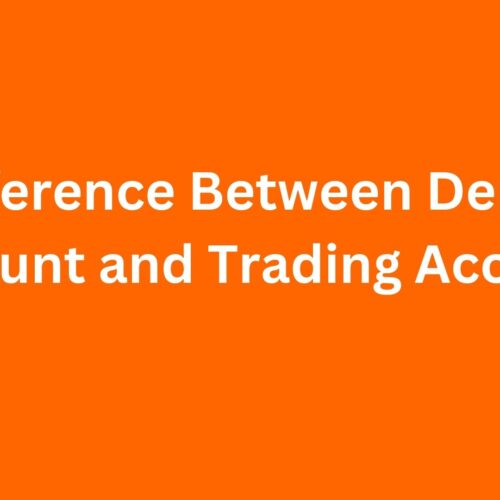In accounting, what is an account, is a general ledger record used to sort and store transactions. For example, a company has a cash account that records all transactions that increase or decrease the company’s cash. Another account is the Sales account which collects all amounts from the sale of goods. Most accounting systems require each transaction to affect more than one account. For example, cash sales increase the cash account and increase the sales account. The term account is also used in transactions where a supplier sells goods to a customer and in credit terms such as: 10 days net. In this situation, the supplier sold the goods on the account and the customer bought the goods on the account. The supplier has also increased the balance of the checking account labeled as accounts receivable and the customer is planning to increase the balance of the checking account labeled as accounts payable.
Table of Contents
- What is an Account?
- Types of Bank Accounts
- Summary
- Further Reading:
- FAQs: Frequently Asked Questions
What is an Account?
What is the definition of an account? There are five main types of accounts used in accounting systems. Each of these is represented by an extended accounting equation. Assets = Liabilities + Equity + Income – Expenses.
Let’s have a look:
Assets Account
Assets are resources that a company can use to generate current and future income. Asset accounts have a debit balance and always appear first on the balance sheet.
Liability Account
Liabilities represent the debts a company owes to its creditors. This may include not only bank liabilities but also the owner’s bonds. Liability accounts have balances and appear below assets on the balance sheet.
Equity Accounts
Equity accounts represent an owner’s interest in a company. Equity is often referred to as net worth because it represents the number of assets that the owner owns after the creditors have paid off. This can be calculated by reversing the balance sheet equation and asking for equity instead of assets.
The income and expense accounts are technically temporary capital accounts, but they are important enough to be mentioned separately. Income accounts track the income generated by your business. These items have a credit and are added to the total capital.
Expense Accounts
Expense Accounts, on the other hand, represent the resources used to generate revenue. These items have a debit balance and less total equity. At the end of each accounting period, depending on the type of organization, income and expense accounts are closed to either income summary accounts, retained earnings accounts, or equity accounts.
Types of Bank Accounts
Whether you are a housewife or a student, a business owner, or a commercial building, a retired professional, or an Indian living abroad, it is hard to imagine not having a bank account. Banks offer a choice of bank accounts based on purpose, frequency of transactions, and location of the account holder. Here is a list of some types of bank accounts.
Current Account
A current account is a savings account for merchants, business owners, and entrepreneurs who need to make payments more often than others. These accounts hold more liquidity deposits with no limit on the number of transactions per day. The current account allows overdraft functionality. This means you can withdraw more than you currently have in your account. Also, unlike interest-bearing savings accounts, these are interest-free accounts. To be able to maintain your current account, you must maintain a minimum balance.
Savings Account
A savings account is a fixed deposit account with a minimum interest rate. Here, the number of trades that can be made each month is limited. Banks offer a variety of savings accounts based on the type of depositor, product features, age, purpose of the account, etc.
There are various savings accounts, savings accounts for children, seniors or women, institutional savings accounts, and family savings accounts.
You can choose from a variety of savings products. There are savings accounts with zero balances and advanced accounts with features like automatic sweeps, debit cards, bill payments and cross-product benefits.
A cross-product benefit is when you have a savings account with your bank and receive a special offer when you open a second account i.e., a Demat Account.
Salary Account
Among the different types of bank accounts, a salary account is an account opened for the connection between an employer and a bank. This is the account into which all employee’s salaries are credited at the beginning of the payroll cycle. Employees can choose the type of payroll account based on the functionality they require. Banks with payroll accounts also have refund accounts. This is where allowances and refunds are credited.
FD (Fixed Deposit) Account
There are different types of accounts such as term deposits and time deposits to deposit money and earn decent interest rates.
Term Deposit (FD) accounts allow you to earn a fixed interest rate by locking a certain amount for a certain period of time, ie until the FD matures. FD’s term of office is from 7 days to 10 years. The interest rate earned on FD depends on the period of FD. In general, he cannot withdraw money from the FD before the deadline. Some banks offer early withdrawal options. But in this case the interest rate you get will be lower.
Recurring Deposit Account
Term Deposits (RD) have a fixed term. To earn interest, you must invest a certain amount on a regular basis (monthly or quarterly). Unlike FDs, which require lump sum deposits, here you need to invest less and more often. RD term and monthly or quarterly investment amount cannot be changed. With RD you also face penalties in the form of lower interest rates for early withdrawal. The duration of an RD ranges from 6 months to 10 years.
Summary
An account is a record of commercial transactions classified according to accounting equations.
Further Reading:
Click on the below link to read relevant articles.
FAQs: Frequently Asked Questions
Who is the father of the account?
Luca Pacioli
In 1494, the first book on double-entry bookkeeping was published by Luca Pacioli. Since Patchouli was a Franciscan friar, he could simply be called Friar Luca.
What are the 3 golden rules of accounts?
Let’s look at the three main rules of accounting.
Debit the receiver & Credit the giver.
Debit what comes in & Credit what goes out.
Expenses and losses are Debit, and Income & Profits are Credit.
What is debit in accounting?
A recorded entry for a payment made or owed is Da ebit. Debit entries are usually created to the left of accounts. So, when a transaction is made in a double-entry bookkeeping system, one account is debited and the other is credited.
What is credit in accounting?
In accounting, a credit is a transaction that records a decrease in an asset or an increase in liability and a decrease in expenses or an increase in income.
What is credit in banking?
Bank credit is therefore the total amount of money that an individual or business can borrow from a bank or other financial institution. A borrower’s bank credit depends on their ability to repay all their loans and the total amount of credit available to their banking institution.
What accounts are assets?
Examples of asset accounts include cash, accounts receivable, inventory, accruals, investments, buildings, equipment, vehicles, and goodwill.
What is in a balance sheet?
A balance sheet is a statement of a company’s assets, liabilities, and equity at a particular point in time. A balance sheet is usually produced at the end of a specific period (quarterly, annually, etc.). A balance sheet consists of two columns. One is for Assets & other is for Liabilities.
What is an asset vs liability?
In its simplest form, the balance sheet follows which can be divided into two categories i.e., assets and liabilities. Assets are items owned by a company that can provide future economic benefits.
A liability is something you owe to another party. In short, assets put money in your pocket and liabilities put money out!
Is rent a liability or asset?
Liability account
Rent paid is a liability account in the tenant’s general ledger that shows the amount of rent owed as of the balance sheet date.



